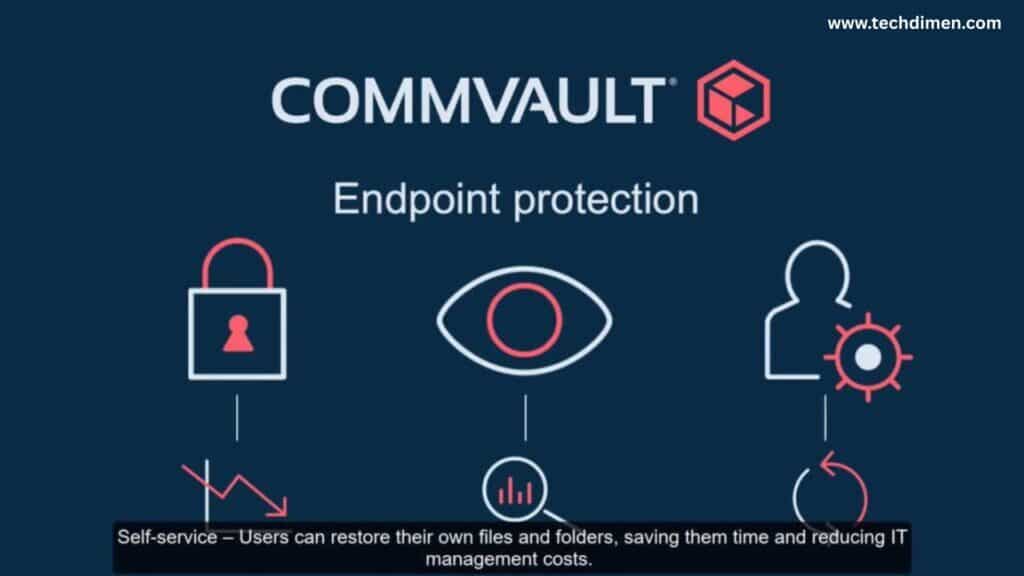In today’s threat landscape, where cyberattacks grow smarter and faster, traditional endpoint security tools are no longer enough. Malware, ransomware, phishing, and zero-day exploits often bypass antivirus and even advanced EDR systems. That’s where endpoint application isolation and containment technology steps in. This advanced strategy helps you build zero trust endpoint security by creating barriers between threats and your system before they spread.
This in-depth guide breaks down everything you need to know about application isolation and containment, from how it works to its benefits, types, use cases, and practical implementation.
What Is Endpoint Application Isolation and Containment Technology?

Endpoint application isolation and containment refers to a cybersecurity approach that restricts untrusted or potentially harmful applications from interacting with critical system components or data. By placing these apps in a controlled, isolated environment, any malicious behavior is contained without affecting the rest of the system.
Isolation vs. Containment: What’s the Difference?
| Feature | Isolation | Containment |
|---|---|---|
| Core Function | Separates application from system resources | Limits the app’s behavior and data access |
| Execution Environment | Virtual or sandboxed instance | System-based with restricted permissions |
| Use Case | Prevent untrusted apps from running freely | Stop harmful actions from spreading |
| Example | Browser isolation | Email attachment containment |
Application isolation prevents apps from accessing core files by running them in virtual containers, while containment technology in cybersecurity allows limited interaction but restricts harmful outcomes.
Why It Matters Now More Than Ever

With more people working remotely, more endpoints are outside the traditional firewall. Malware can spread fast, especially through phishing emails or malicious websites. Isolation-based cybersecurity drastically reduces the attack surface by acting as a digital quarantine zone.
“Containment isn’t about trusting less; it’s about trusting nothing until verified.” Cybersecurity Analyst, Forrester Research
How Endpoint Application Isolation and Containment Work
Understanding how endpoint security isolation functions is key to adopting it effectively. Here’s how it works step-by-step:
Step-by-Step Breakdown
- Application Execution Begins: When a user launches an application, the system determines its trust level.
- Threat Assessment: Behavioral analysis and threat intelligence feeds evaluate the app.
- Decision Engine: Based on policies, the system isolates or contains the app.
- Secure Execution: The app runs in a sandbox, container, or micro-VM.
- Continuous Monitoring: Any suspicious activity (like unauthorized file access) triggers alerts or shutdowns.
Isolation and Containment Techniques
- Sandboxing: Creates an application sandbox that mimics real environments to analyze behavior safely.
- Micro-virtualization: Runs apps in tiny virtual machines (micro-VM isolation) that self-destruct after use.
- Containerization: Isolates apps in secure containers with strict access controls.
- OS-level isolation: Uses system-based features (like Windows 11 Application Isolation) to segregate processes.
Where Is Endpoint Isolation and Containment Used?

Application isolation and containment has real-world uses across industries that handle sensitive or regulated data.
Key Industries and Applications
- Healthcare
- Protects EHR systems and connected medical devices
- Prevents malware from spreading via untrusted imaging software
- Finance & Banking
- Isolates trading platforms and secure portals
- Stops ransomware attacks from breaching customer data
- Government Agencies
- Segregates classified communication apps
- Shields endpoints from espionage malware
- Manufacturing & ICS Systems
- Prevents tampering of OT systems
- Uses container-based security to secure SCADA interfaces
Types of Endpoint Application Isolation and Containment Technologies
Different methods offer different strengths. Choose based on your environment and risk profile.
Most Common Technologies
| Type | Description |
|---|---|
| Virtualization | Full OS runs in a virtual environment (heavyweight, strong isolation) |
| Micro-virtualization | Ultra-lightweight VM for each app instance |
| Containerization | App runs in isolated Linux containers with kernel-level security |
| Sandboxing | Controlled testing environments for unknown files |
Lightweight vs. Full-Scale Isolation
Some environments, like legacy systems, require lightweight containment tools that don’t overload resources. Others benefit from full VM-based isolation.
Benefits of Application Isolation and Containment for Endpoints
Using endpoint containment software brings layered protection to organizations.
Top Benefits
- Enhanced Security Posture: Blocks threats before they access critical systems.
- Protection Against Zero-Day Malware: Even unknown malware is trapped inside isolated environments.
- Preventing Lateral Movement: Containment stops threats from moving across the network.
- Phishing and Browser Attack Defense: Browser isolation neutralizes malicious code on web pages.
- Regulatory Compliance: Meets strict standards like HIPAA, PCI-DSS, and NIST.
- Improved User Experience: Runs transparently in the background with minimal disruption.
Case Study: Financial Services Firm
A mid-sized investment company implemented browser isolation and email attachment isolation tools. Within two months:
- Phishing click-throughs dropped 72%
- Zero ransomware infections
- Compliance audit scores improved by 40%
Downsides of Endpoint Application Isolation and Containment
While powerful, no solution is perfect.
Challenges to Consider

- Resource Consumption: VM and sandboxing can increase CPU/RAM usage.
- Compatibility Issues: Some legacy apps may not function in isolated environments.
- Complex Deployment: Needs policy tuning, integration with SIEM or EDR, and regular updates.
- False Positives: Aggressive isolation may interfere with legitimate workflows.
Mitigation Strategies
- Use behavioral-based protection with dynamic threat detection to minimize false alarms.
- Combine with EDR and SIEM systems for better visibility.
- Start with high-risk apps (browsers, email clients) before full rollout.
How to Implement Endpoint Isolation and Containment Effectively
Best Practices for Deployment
- Define Isolation Policies: Identify untrusted or high-risk applications.
- Start with Critical Endpoints: Protect executive laptops, finance systems, and remote users first.
- Integrate with Existing Tools: Combine with EDR, antivirus, and zero trust architecture.
- Regularly Update Definitions: Stay current with threat intelligence feeds.
- Monitor and Optimize: Use logs and SIEM integration for visibility.
Recommended Endpoint Isolation Tools
| Tool Name | Key Features | Ideal For |
|---|---|---|
| Bromium / HP Sure Click | Micro-VM isolation, browser containment | Enterprises, Government |
| Menlo Security | Browser isolation, phishing prevention | Finance, Legal Firms |
| Symantec Endpoint Isolation | Email, browser, and app isolation | Mid to large businesses |
| Citrix Secure Browser | Virtual browser hosted in the cloud | Remote workers, BYOD setups |
Role in Zero Trust and the Future of Endpoint Security
Endpoint Application Isolation and Containment Technology aligns perfectly with zero trust endpoint security. It assumes no app, process, or user is inherently trusted.
Key Roles in Zero Trust Architecture
- Verify Every App and Process: No implicit trust based on origin or certificate.
- Continuous Monitoring: Real-time containment adapts as behavior changes.
- Least Privilege Enforcement: Only essential access is allowed, reducing attack vectors.
“Zero Trust doesn’t start at the perimeter; it starts at the application.” John Kindervag, Creator of Zero Trust Model
FAQs
1. What Is Endpoint Application Isolation and Containment?
Endpoint application isolation and containment is a security technique that protects endpoints like laptops and desktops by running risky or untrusted applications in controlled environments. This prevents threats such as malware or ransomware from spreading to the rest of the system.
2. What’s the Difference Between Isolation and Containment?
Isolation completely separates an application from the operating system using techniques like sandboxing or virtualization. Containment, on the other hand, limits the application’s access to system resources without full separation. Isolation offers maximum protection, while containment provides a more flexible layer of defense.
3. Why Is This Technology Important in a Zero Trust Security Model?
Zero Trust assumes no application or user is automatically trusted. Isolation supports this model by ensuring every app must operate within strict boundaries. Even if an app is compromised, it can’t interact freely with the system.
4. Can It Stop Zero-Day Attacks?
Yes. Since zero-day attacks exploit unknown vulnerabilities, traditional defenses may miss them. Running applications in isolated environments blocks these threats from affecting the rest of the system even without a known malware signature.
5. What Are Real-World Examples of Isolation in Action?
Common use cases include:
- Browser isolation: Running web sessions in a sandbox
- Email isolation: Opening attachments in a secure container
- Virtual desktop apps: Restricting remote access to sensitive data
6. Does Isolation Use a Lot of System Resources?
It depends. Full virtual machines can be resource-heavy, but newer techniques like micro-virtualization and containerization are lightweight, offering strong security without impacting performance.
7. Will Isolated Applications Still Work Normally?
Yes. Most users won’t even notice the difference. The isolation process runs in the background, allowing users to interact with the application as usual unless the app tries to do something suspicious.
8. How Does Sandboxing Differ from Containerization?
Sandboxing emulates a safe environment to test application behavior. Containerization creates lightweight, secure spaces at the OS level where apps run with predefined permissions. Both isolate risks but use different approaches.
9. Should I Replace My Antivirus or EDR?
No. Isolation and containment are add-on protections. They work best when combined with antivirus, EDR (Endpoint Detection and Response), and threat intelligence platforms in a multi-layered security strategy.
10. What Are the Best Tools for Application Isolation?
Popular solutions include:
- HP Sure Click (formerly Bromium)
- Menlo Security
- Symantec Endpoint Isolation
- Citrix Secure Browser
Each offers a unique approach to isolating web traffic, email attachments, or enterprise apps.
Conclusion
If you’re serious about preventing lateral movement in endpoints, stopping zero-day malware, and enabling secure remote work, then the answer is yes. Endpoint application isolation and containment technology is a modern, strategic layer of protection that complements existing tools and supports a zero trust cybersecurity model.
For industries under constant attack or regulatory pressure, it’s not just a nice-to-have it’s essential.

Jhon AJS is a tech enthusiast and author at Tech Dimen, where he explores the latest trends in technology and TV dimensions. With a passion for simplifying complex topics, Jhon aims to make tech accessible and engaging for readers of all levels.







